Pink eye, also called conjunctivitis, can make little eyes go from sparkling to scratchy in no time. It’s a common condition among children, and understanding it can help you take the best care of your child’s eyes. Let’s dive into what Dr. Monica Davern, a dedicated pediatrician at Blueberry Pediatrics, says about pink eye.
What is pink eye?
Pink eye occurs when the conjunctiva, the thin, clear tissue lying over the white part of the eye, becomes inflamed. Dr. Davern explains, “When this tissue gets irritated or infected, it can turn pink or red, and that’s a sign that your child might have pink eye conjunctivitis.”
Causes of pink eye in children
Children can get pink eye from viruses, bacteria, or allergies, all of which can happen from touching their eyes with dirty hands. Viral conjunctivitis, the most common form of pink eye in children, can be caused by the same viruses responsible for the common cold, highlighting the connection between the two in terms of contagiousness and symptoms. “The most common cause among children is viral, which can spread quickly in schools and playgrounds,” says Dr. Davern.
How is pinkeye diagnosed?
A doctor can typically diagnose pink eye through a physical examination and discussing symptoms. If you suspect your child has pink eye, it's important to consult a doctor, as it can sometimes be mistaken for other eye conditions requiring different treatments. A proper diagnosis will ensure your child receives the most effective treatment for their condition.
Viral conjunctivitis

Pink eye caused by a virus is called viral conjunctivitis. It is highly contagious from onset, and the contagious period can last for 10-12 days (as long as the eyes are red).
Adenovirus is the most common viral infection that causes viral conjunctivitis (viruses that cause mild cold- or flu-like illness). Symptoms of viral conjunctivitis can mirror those of the common cold, including a sore throat, highlighting the connection between viral conjunctivitis and cold-like symptoms. Other viral infections that cause viral pink eye include herpes simplex virus, varicella-zoster virus, and picornavirus.
Symptoms of viral conjunctivitis
Viral conjunctivitis is contracted by coming into contact with the secretions of an infected person or contaminated surfaces. It usually affects both eyes, and symptoms can include redness, watery discharge, itchiness, and sensitivity to light. Viral pink eye does not require treatment, and the symptoms typically go away after 10-14 days.
Preventing viral conjunctivitis
To prevent the spread of viral conjunctivitis, it is important to practice good hygiene by washing your hands frequently with soap and water and avoiding touching your eyes. If your child is diagnosed with viral conjunctivitis, they should stay home from school or daycare until symptoms are gone to avoid spreading the infection.
Bacterial conjunctivitis
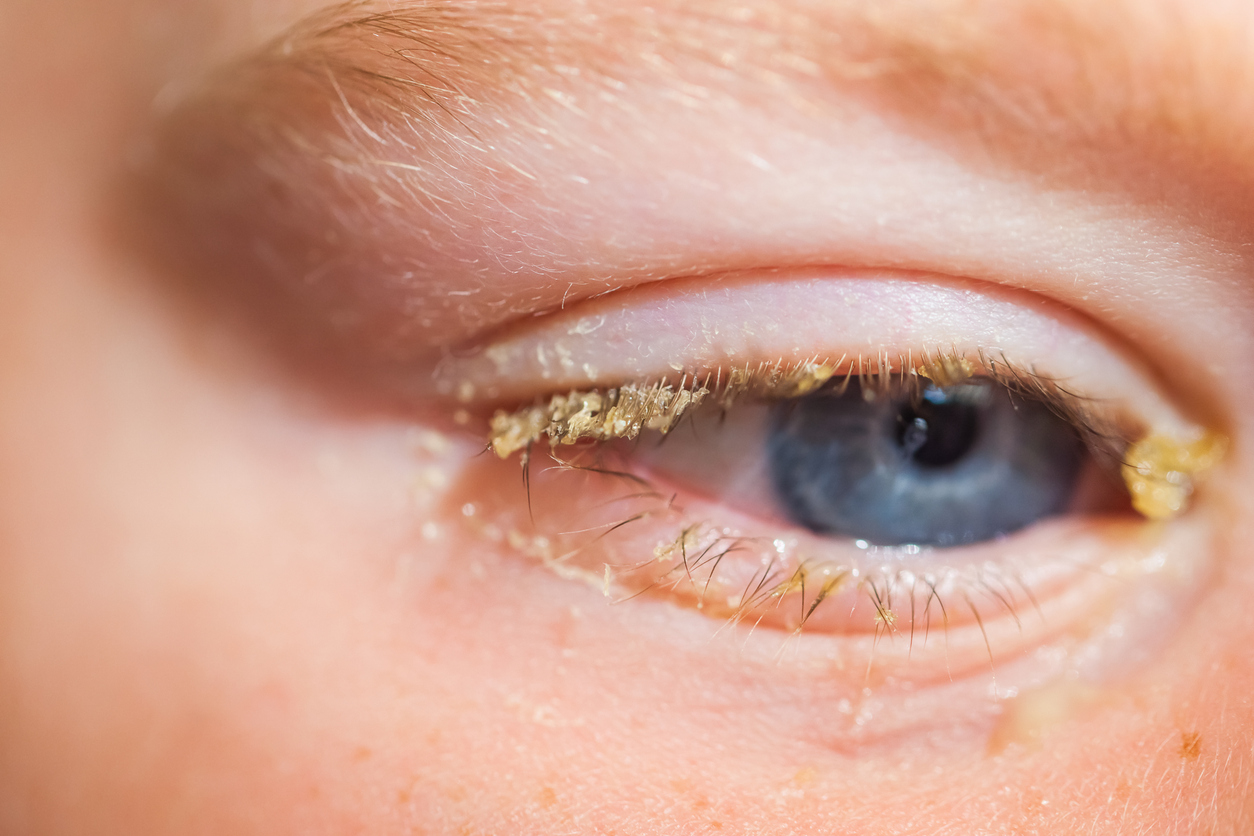
While viral and allergic conjunctivitis are the most common types of pink eye, it is possible to contract pink eye from a bacterial infection. Like viral conjunctivitis, bacterial pink eye is highly contagious and spreads through hand-to-eye contact, eye contact with contaminated objects, or from mother to baby during the birthing process.
Symptoms of bacterial conjunctivitis
Symptoms of bacterial pink eye include redness, irritation, and discharge from the eye. Unlike viral conjunctivitis, bacterial pink eye may also cause a yellow or greenish discharge from the eye. Bacterial conjunctivitis may occur in only one eye. Severe pain and intense redness and discharge could be symptoms of bacterial conjunctivitis, indicating the need for a prompt medical consultation. If you suspect your child has bacterial conjunctivitis, consult a pediatrician for diagnosis and treatment.
Treatment for bacterial conjunctivitis
Treatment options for bacterial pink eye may include antibiotic eye drops or ointments prescribed by a doctor. Parents should administer these medications as directed and finish the full course of treatment, even if the symptoms improve. Failure to do so can lead to recurring infections or antibiotic resistance. It is also important not to use antibiotic drops from previous infections until consulting with a physician.
Allergic conjunctivitis
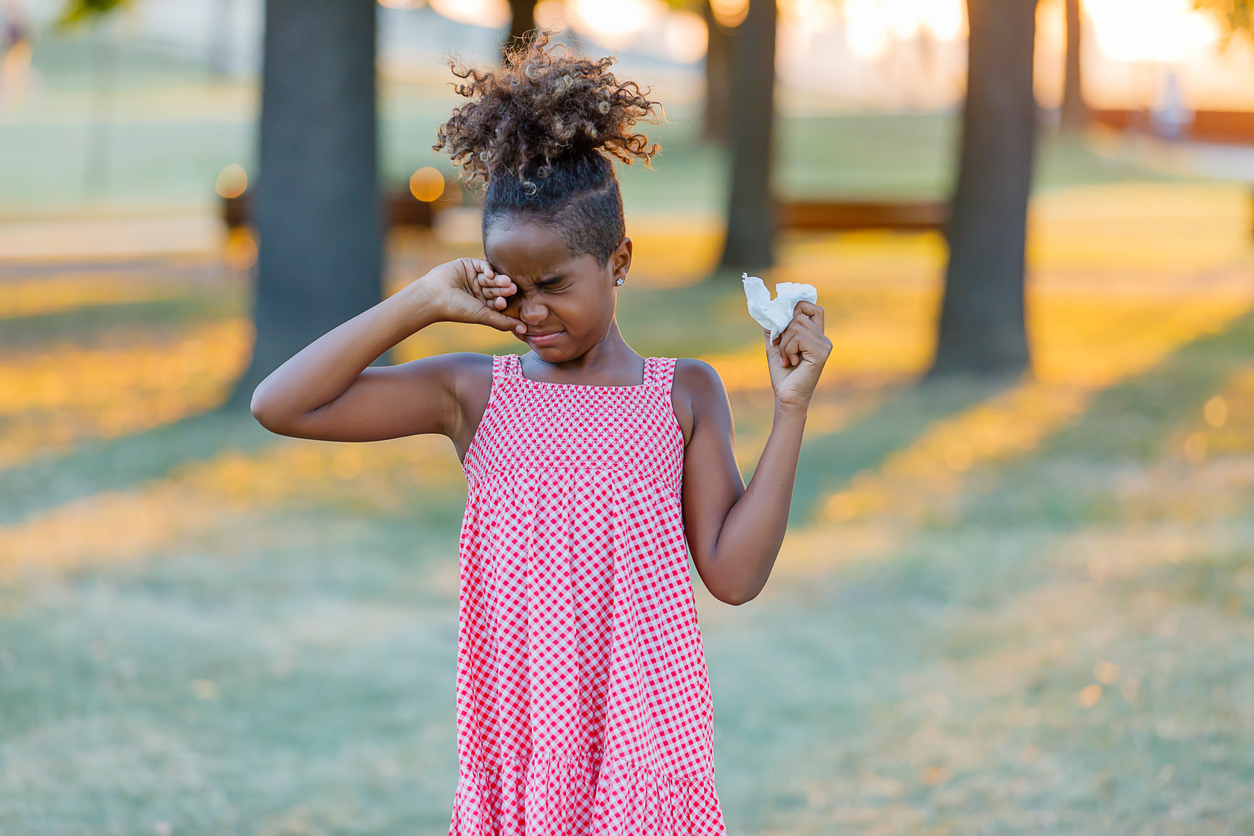
Allergic conjunctivitis is pink eye caused by allergies, specifically an allergic reaction to environmental allergens such as pollen, animals, cigarette smoke, pool chlorine, and car fumes.
Unlike viral and bacterial conjunctivitis, this classification of pink eye is not contagious. It occurs when the conjunctiva reacts to pollen, dust mites, pet dander, mold, or other allergy-causing substances and becomes swollen or inflamed. For mild cases of allergic conjunctivitis, artificial tears can help relieve discomfort.
Symptoms of allergic conjunctivitis
Allergy-induced pink eye symptoms include redness, itching, and increased tears. Your child may experience itchiness, redness, watery eyes, puffy eyes, blurred vision, or sensitivity to light.
Acute allergic conjunctivitis appears suddenly upon exposure to allergens, typically resolving within 24 hours. In contrast, seasonal allergic conjunctivitis lingers throughout the pollen season, often in Spring, possibly leading to recurrent episodes.
Preventing allergic conjunctivitis
To prevent allergic conjunctivitis, it is important to avoid exposure to allergens. This can be achieved by keeping windows and doors closed during high pollen seasons, using air purifiers in the home, and avoiding outdoor activities when pollen counts are high. Regularly cleaning and vacuuming your home can help reduce dust mites and pet dander.
Treatment for allergic conjunctivitis
If you or your child experiences symptoms of allergic conjunctivitis, it is important to seek treatment from a healthcare professional. Treatment options may include over-the-counter antihistamine eye drops, prescription medications such as mast cell stabilizers or corticosteroids, or immunotherapy (allergy shots) for severe cases.
Other pink eye treatments
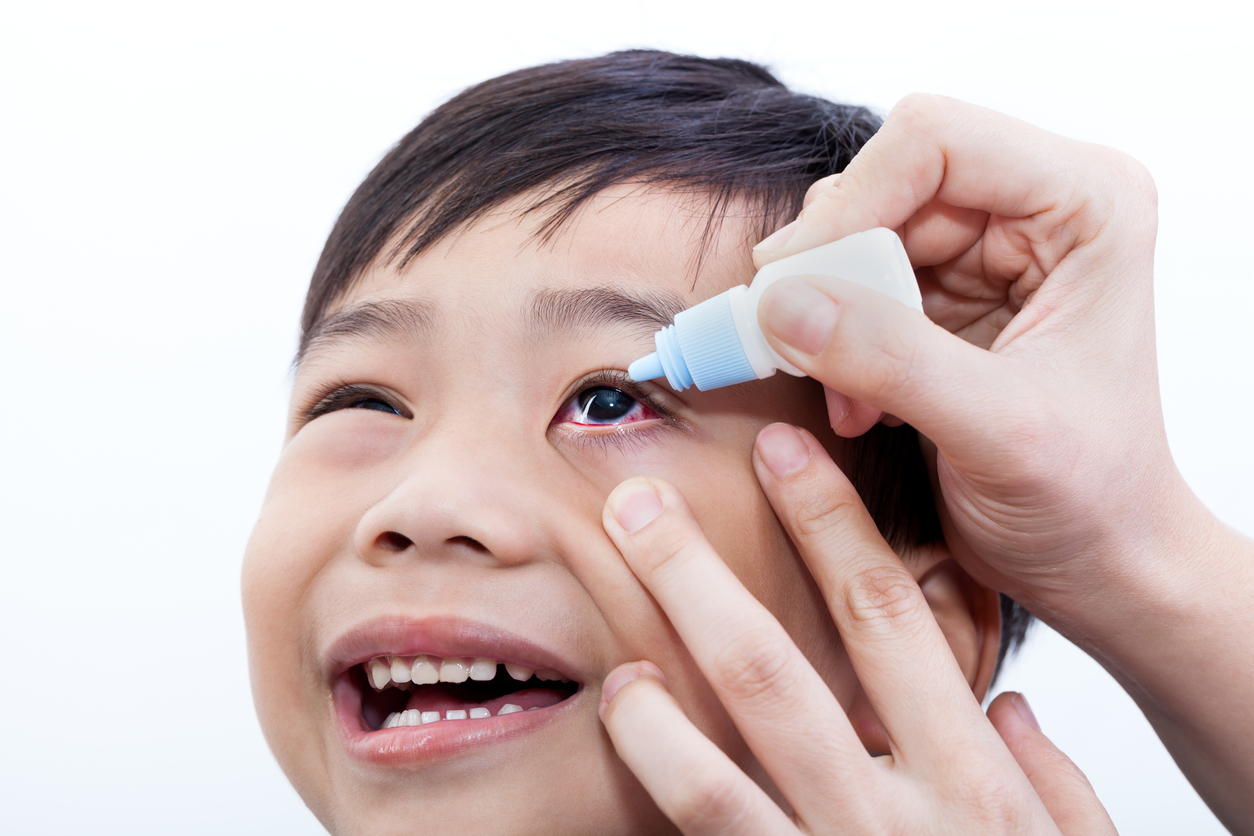
In addition to medication, you can take steps at home to help relieve pink eye symptoms and prevent the infection from spreading.
Clean eye discharge
If your child's pink eye is causing excessive discharge, gently clean around their eyes with a warm, damp cloth to remove crust and buildup. Be careful not to touch the unaffected eye with the same cloth to avoid spreading the infection.
Apply a warm compress
A warm compress to the infected eye can help reduce swelling and discomfort. Soak a clean cloth in warm water, wring out excess water, and gently place it over the closed eyelid for 5-10 minutes. Repeat this several times a day for relief.
Wash hands frequently
You and your child should wash your hands often, especially after touching the infected eye or any surfaces that may have come into contact with it. This can help prevent the spread of bacteria and reduce the chances of reinfection.
Avoid touching eyes
Encourage your child not to touch or rub their infected eye, which can further irritate and spread the infection.
Use artificial tears
Artificial tears can provide relief for children by lubricating and soothing the affected eye
Don't share personal items
Avoid sharing personal items such as towels and pillows with others. Conjunctivitis can spread through common items, so it's important to keep them separate and regularly wash them.
Avoid wearing contact lenses
If your child wears contact lenses, they should temporarily switch to glasses until the infection has cleared up. Contact lenses can further irritate the infected eye and potentially worsen the condition.
It is also important to regularly clean surfaces that may come into contact with the eyes, such as glasses or contact lenses.
Preventing Pink Eye
Good hygiene is the best defense against pink eye. Teach your children to wash their hands regularly and to avoid touching their eyes.
“It’s also important to wash pillowcases, sheets, and towels in hot water and detergent to kill germs,” Dr. Davern adds.
When to See a Doctor
Dr. Davern recommends seeking medical attention if your child experiences severe eye pain, vision problems, intense redness, or worsening symptoms. “These symptoms could indicate a more serious condition that needs immediate treatment,” she points out.
Do you suspect your child has pink eye? Consult with a Blueberry Pediatrician to get a diagnosis and treatment from the comfort of your home.
Blueberry Pediatrics is one of the largest pediatric practices in the US. Members get 24/7, on-demand access to board-certified pediatricians. Get guidance and treatment (including medications prescribed if medically necessary) without leaving home - for one low fee for your whole family. Get care immediately upon sign-up.
.png)
Frequently Asked Questions
Can pink eye be prevented?
Yes, by maintaining good hygiene and avoiding contact with those infected.
Is pink eye contagious?
Viral and bacterial pink eye can easily spread through contact with infected people or contaminated items. Pink eye that results from an allergic reaction is not contagious.
How long does pink eye last?
Depending on the cause, it typically lasts from a few days to two weeks.
What are common pink eye symptoms?
Redness, itching, discharge, and sensitivity to light are common symptoms of pink eye.
Can my child wear contact lenses when they have pink eye?
No, it is not recommended to wear contact lenses while they have pink eye as it can further irritate the eye and spread the infection.






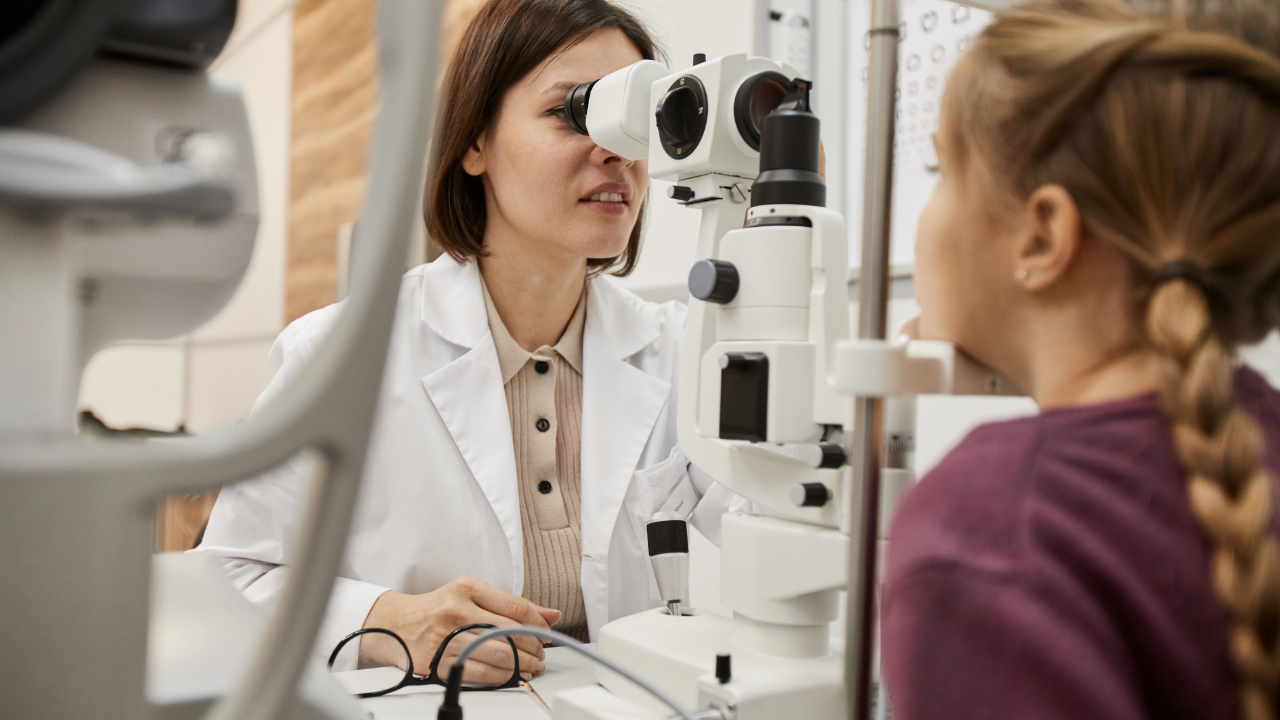
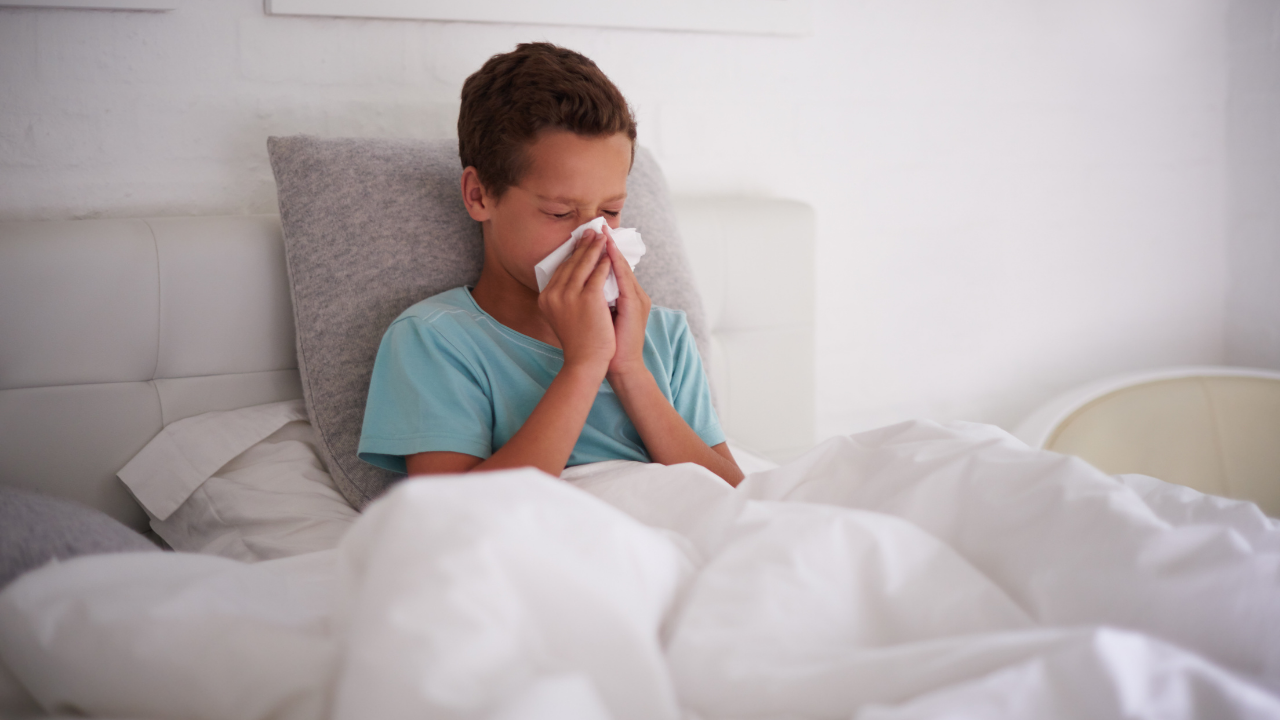
.svg)






.svg)
.svg)